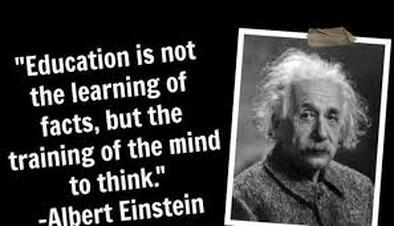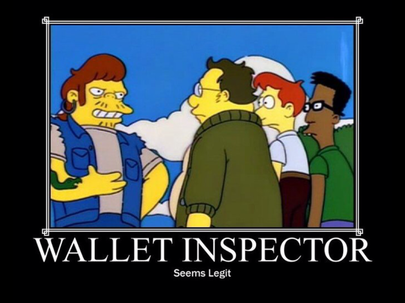On the Curriculum Implementation Day, The Social Studies Dept at PMSS co-designed a lesson on how to encourage Critical Thinking.

1. As a class, brainstorm a definition of "Critical Thinking"
-What would be our definition?
-Why is it important to think critically?
-Do students have any examples of a time they did/did not think critically that they want to share?
2. Let's Define Critical Thinking by looking at the competency from the Ministry of Education Website:
-What would be our definition?
-Why is it important to think critically?
-Do students have any examples of a time they did/did not think critically that they want to share?
2. Let's Define Critical Thinking by looking at the competency from the Ministry of Education Website:
3. It can be further broken down into three categories (we are only looking at two)
4. Watch "House Hippo" to remind students why we need to focus on Critical Thinking.
-Class discussion when done.
-Class discussion when done.
5. Distribute several photos of real and fake items around the room. Pasted to white boards, mini-whiteboards or chalkboards. Students have to ask as many critical thinking questions as possible during a "Gallery Walk." There is a slideshow of the pictures below on the website. There is also a video students can choose to watch/comment on. It will play on the teacher's laptop or the LCD screen.
During Gallery Walk, please respond to the following questions:
During Gallery Walk, please respond to the following questions:
| pictures_of_real_and_fake_items.docx | |
| File Size: | 2250 kb |
| File Type: | docx |
Is the item real or fake?
How do you know?
What features make it seem real?
What features make it seem fake?
What questions do you have about reliability?
How do you know?
What features make it seem real?
What features make it seem fake?
What questions do you have about reliability?
6. Teacher will demonstrate with the Trump VS Hitler Chart doing a class "Fishbowl" to show how teacher would question validity of the item.
-Look at the picture, why chose those ones?
-What else did Hitler do? Trump? Are these facts true? What is not listed? How do we check? When you reduce something to simplistic lists, you miss the complexity?
Who made the list?
7. Now, in groups of 2-4, students select a picture or a video from one of the ones from around the room and have to do a similar presentation as a group showing the questions they would ask. (Basically do what the teacher did in the "Fishbowl."
-Look at the picture, why chose those ones?
-What else did Hitler do? Trump? Are these facts true? What is not listed? How do we check? When you reduce something to simplistic lists, you miss the complexity?
Who made the list?
7. Now, in groups of 2-4, students select a picture or a video from one of the ones from around the room and have to do a similar presentation as a group showing the questions they would ask. (Basically do what the teacher did in the "Fishbowl."
|
|
|
Here's a look at the annotated student examples from 2016. Students presented their critical thinking to the class. They discussed the questions and thought process that led them to their answers.
Where to next? Let's apply these critical thinking skills to the curricular competencies and to rich content:
8. Teacher will provide students with Key Definitions for our next critical thinking assignment called "Document Based Questions."
You are no longer a student, you are a historical detective. Using the vocabulary below and your newly sharpened critical thinking skills, we will look at several historical documents and try to come up with the closest to the truth that we can!
Primary Source: A document/source created at the time of an event. Less reliable because relies on eyewitness accounts. Examples include: News stories, pictures, newspapers, eyewitness accounts, etc.
Secondary Source: A document/source that takes several primary sources and synthesizes them. Often, more reliable since it take account of multiple viewpoints. The hallmark of a secondary source is that it takes place after an event. Examples: Textbooks, journal articles, biographies, etc.
Bias: A preference for a certain point of view. (The lense through which a person views the world.). Example: Sexist, Racist, Liberal, Conservative, Left wing, right wing.
(Bias should not be reduced all the time to "good" or "bad." However, students need to be aware of their bias.
Corroborate: To agree with / support.
We will watch the two awareness tests below as a way t explore why we need to be observant and spend time looking at these documents carefully and critically.
8. Teacher will provide students with Key Definitions for our next critical thinking assignment called "Document Based Questions."
You are no longer a student, you are a historical detective. Using the vocabulary below and your newly sharpened critical thinking skills, we will look at several historical documents and try to come up with the closest to the truth that we can!
Primary Source: A document/source created at the time of an event. Less reliable because relies on eyewitness accounts. Examples include: News stories, pictures, newspapers, eyewitness accounts, etc.
Secondary Source: A document/source that takes several primary sources and synthesizes them. Often, more reliable since it take account of multiple viewpoints. The hallmark of a secondary source is that it takes place after an event. Examples: Textbooks, journal articles, biographies, etc.
Bias: A preference for a certain point of view. (The lense through which a person views the world.). Example: Sexist, Racist, Liberal, Conservative, Left wing, right wing.
(Bias should not be reduced all the time to "good" or "bad." However, students need to be aware of their bias.
Corroborate: To agree with / support.
We will watch the two awareness tests below as a way t explore why we need to be observant and spend time looking at these documents carefully and critically.
|
|
|
9. As a class, we will view an example of a modern day news article and some raw footage that highlight how there can be multiple viewpoints about the same event. There's also a news article from the print media below the videos. Show RCMP videos and discuss which is the primary source? What is the secondary? To what extent do they corroborate? Is there bias? If so where?
Remember students, the goal is to be curious and to use your critical thinking skills. What about these two clips makes you wonder?
Remember students, the goal is to be curious and to use your critical thinking skills. What about these two clips makes you wonder?
|
|
|
| rcmp_investigated_over_handling_of_elderly_couple_caught_on_video_-_the_globe_and_mail.pdf | |
| File Size: | 262 kb |
| File Type: | |
10. Students will now go into their grade based "Document Based Questions"
A. Napoleon For Grade 9
B. Confederation for Grade 10
C. WW1 - Women's Roles for Grade 11
D. Apartheid for History 12
A. Napoleon For Grade 9
B. Confederation for Grade 10
C. WW1 - Women's Roles for Grade 11
D. Apartheid for History 12
| women_in_war_document_based_questions.pdf | |
| File Size: | 743 kb |
| File Type: | |




